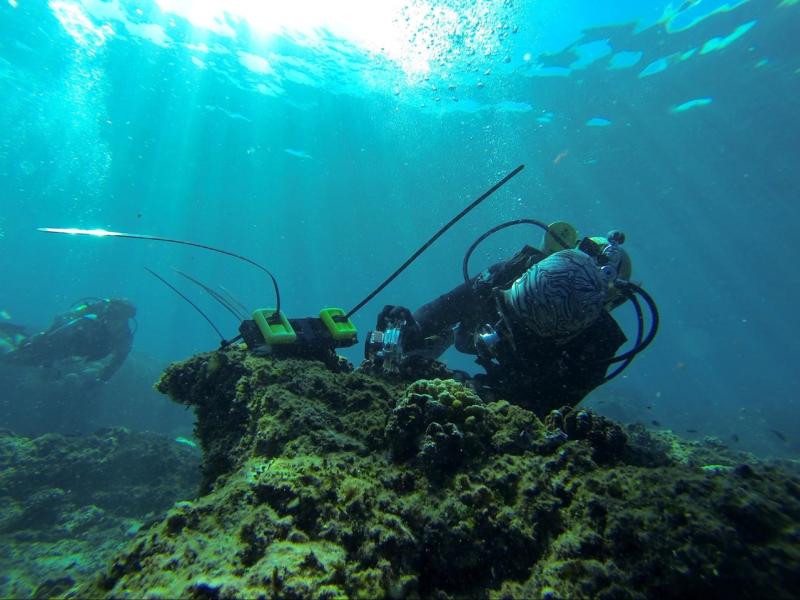A team of NOAA scientists recently examined more than a thousand hot water events on coral reefs across the Pacific Ocean. Combining on-site monitoring with satellite records, they found that corals in deeper waters are just as exposed to marine heatwaves as those in shallower waters. They published these findings in Nature Scientific Reports.
This is bad news for coral reefs. These unique ecosystems have already experienced the devastating effects of three global coral bleaching events from hotter-than-normal water. Climate models project that temperatures will continue to rise.
“Scientists primarily use satellite-derived sea surface temperatures to understand heat stress and predict coral bleaching,” said Dr. Scott Heron, an associate professor at James Cook University and partner of NOAA. “It’s immediately available, it’s convenient and it has global coverage. However, because the measurement is only at the very surface of the ocean, there is some uncertainty about how well it reflects what is actually happening on deeper reefs.” In fact, the data might be underestimating the stress caused by these higher temperatures.
Measuring Temperature On-Site
To get an accurate understanding of how depth influences heat stress, researchers deployed subsurface temperature recorders at 457 coral reef sites between 2001 and 2017. The sites were spread among 49 islands in the western and central Pacific. They then compared the data with what the satellites were telling them.
Subsurface temperature recorder installed at Lisianski Island in the Papahānaumokuākea Marine National Monument. Photo: NOAA Fisheries.
“Our analysis of 1,453 heating events found that the vast majority of the time, there was no escape from the heat down to a depth of 125 feet (38 meters),” said Dr. Tom Oliver, co-lead author of the paper and research ecologist at NOAA’s Pacific Islands Fisheries Science Center. He said this might seem counterintuitive because the ocean is generally colder in deeper waters, but the deeper corals are also used to these cooler conditions.
“Heat stress isn’t so much about the temperature itself, but how different today’s temperature is from what the corals are used to experiencing,” Dr. Oliver said. Even if there were significantly lower temperatures at depth, coral colonies might still die when their environment heats above its normal range. At those depths, they are likely acclimated to lower temperatures or to a reduced level of temperature variability than those at the surface.


